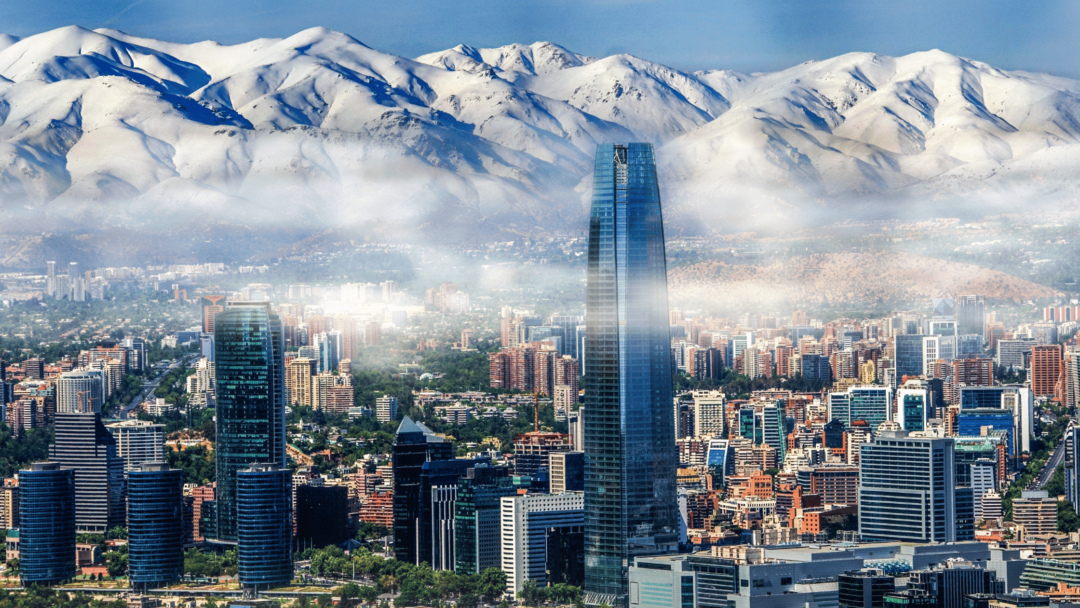Diving into the most popular hobbies in Malaysia offers a unique window into the country’s vibrant culture and rich history.
Whether you’re interested in traditional crafts like batik and songket weaving or modern urban activities such as exploring Kuala Lumpur’s bustling markets, there’s something for everyone.
These hobbies not only provide a way to enjoy your free time but also serve as a means to connect with the local culture and its historical roots.

Engaging in these hobbies allows you to experience Malaysia’s diverse artistic heritage firsthand.
For instance, trying your hand at woodcarving or participating in traditional dance classes can give you a deeper appreciation of the country’s cultural fabric.
Exploring local hobbies is not just about pastimes; it’s about immersing yourself in the lifestyle and traditions that define Malaysia.
By understanding and participating in these activities, you gain more than just a new hobby.
You develop a nuanced appreciation for a culture that seamlessly blends the old with the new.
From the dynamic streets of Kuala Lumpur to the serene villages of the countryside, the popular hobbies in Malaysia provide a comprehensive look at what makes this Southeast Asian nation truly unique.
Cultural Tapestry of Malaysia

Malaysia’s rich cultural landscape boasts a unique blend of traditions, deeply rooted in its diverse heritage.
Malaysia’s Melting Pot of Traditions
Malaysia celebrates a variety of cultural traditions passed down through generations.
The country’s major ethnic groups—Malay, Chinese, and Indian—each contribute to the vibrant cultural fabric.
Festivals like Hari Raya Aidilfitri, Chinese New Year, and Deepavali showcase the rich diversity and cultural significance of these communities.
Penang and Malacca offer a glimpse into Malaysia’s multicultural heritage with their historical sites and traditional architecture.
George Town’s architectural style reflects the blend of Chinese, Indian, and Malay influences, while Malacca’s heritage sites reveal Portuguese, Dutch, and British impacts.
Sarawak, in Borneo, is renowned for its indigenous traditions and ancient weaving techniques, adding another layer to Malaysia’s cultural diversity.
Historical Influences on Leisure Activities
The historical influence on Malaysia’s leisure activities is considerable, reflecting the country’s colonial past and centuries of trade.
Traditional games like congkak and gasing are still popular and serve as a testament to the cultural significance of indigenous play.
Colonial-era sports such as badminton and football have also found a permanent place in Malaysian society.
The integration of Chinese, Malay, and Indian heritage into festivals, culinary traditions, and street art in places like Penang and George Town highlights the country’s diverse cultural landscape.
Community-driven activities, such as traditional dance and martial arts like silat, underscore a commitment to preserving cultural heritage while embracing modern influences.
Traditional Arts and Performances

Traditional arts and performances in Malaysia are deeply intertwined with the nation’s vibrant cultural history. These cultural expressions are celebrated through various festivals and preserve essential aspects of Malaysian heritage.
The Richness of Traditional Music and Dance
Traditional music and dance in Malaysia showcase the rich diversity of its ethnic communities.
The use of instruments like the Rebana and Gendang adds a distinctive rhythm to performances.
For example, the dance form Jikey, popular in Kedah and Perlis, combines singing and elements from other local dances like Mak Yong and Hadrah.
Wayang Kulit, performed in a Kelantanese Malay dialect with Thai Patani influences, and Wayang Jawa, notable in Selangor and Johor, use shadow puppetry to narrate ancient stories.
These performances are often integral parts of festivals, celebrations, and cultural events, making them accessible to both locals and visitors.
Preserving Cultural Heritage Through Art
Malaysia’s traditional arts, such as Batik and calligraphy, reflect the nation’s multifaceted history.
The creation of Batik, a method of dyeing fabric using wax-resistant techniques, is especially prominent in states like Kelantan and Terengganu.
This art form is celebrated at various cultural events and showcases the intricate designs unique to different regions.
Efforts to preserve these arts align with UNESCO’s intangible cultural heritage goals.
Institutions and researchers advocate for the protection and promotion of these traditions, ensuring they remain a vital part of Malaysia’s cultural landscape.
By participating in traditional handicrafts, you can develop a deeper appreciation for Malaysia’s artistic legacy and contribute to its preservation.
Modern and Contemporary Hobbies

From pop culture movements driven by social media to vibrant artistic communities, modern hobbies in Malaysia reflect both global trends and local creativity.
Pop Culture and Social Media Trends
In Malaysia, social media platforms like Instagram, TikTok, and YouTube have a profound influence on modern hobbies.
You can easily find popular trends such as cosplay, where enthusiasts dress up as characters from anime, movies, and video games.
These events often culminate in large conventions like Comic Fiesta, attracting participants from all over the country.
Influencer culture is another significant trend.
Many Malaysians turn their everyday activities into captivating content, from makeup tutorials to travel vlogs.
This hobby not only allows for self-expression but also provides opportunities for monetization through brand collaborations and sponsorships.
It’s common to see local influencers showcasing the latest fashion, beauty, and tech gadgets.
Exploring the Creative Scene: Artists and Designers
Malaysia’s creative scene is thriving, with various avenues for budding artists and designers.
Street art is particularly influential, with areas like Georgetown in Penang becoming famous for its striking murals and graffiti.
These art forms often explore themes of identity and culture, making every piece a powerful statement.
Modern architecture adds another layer to Malaysia’s creativity.
The skyline in cities like Kuala Lumpur, dotted with impressive skyscrapers, complements the country’s traditional structures.
You might find inspiration in iconic buildings such as the Petronas Twin Towers or the Menara KL Tower.
Local designers are also pushing boundaries in fashion and product design.
There are numerous workshops and meetups where you can collaborate and learn from established artists and designers.
This environment fosters innovation and places a spotlight on Malaysian talent in the global creative space.
Outdoor and Nature Activities

Malaysia offers a wealth of outdoor activities and nature-based experiences, from pristine beaches and vibrant islands to scenic hiking trails and vast nature parks. These pursuits provide opportunities to explore the country’s rich biodiversity and stunning landscapes.
Beaches and Islands: Sun and Sand Pursuits
Malaysia boasts some of the world’s most beautiful beaches and islands, perfect for sun and sand enthusiasts.
The Perhentian Islands are a top destination for scuba diving and snorkeling, with their crystal-clear waters teeming with marine life and colorful coral reefs.
Langkawi Island, known for its stunning beaches and lush landscapes, offers activities like jet skiing, kayaking, and parasailing.
Tioman Island, another favorite, is ideal for those looking to explore underwater wonders, with excellent dive sites and resorts.
The beaches of Langkawi and Tioman provide a more relaxed atmosphere, where you can lounge in the sun or take a dip in the warm ocean.
Johor Bahru’s coastal areas also provide great spots for beach outings, making it a versatile location for both adventure seekers and those looking to unwind.
Check out our list of beach hobbies for great summer activity ideas for a day at the beach…
Hiking and Walking: Trails and Nature Parks
Hiking and walking in Malaysia provide unique opportunities to experience the country’s diverse natural landscapes.
Gunung Mulu National Park is famed for its extensive cave networks and challenging trails, attracting avid hikers and spelunkers from around the world.
The Batu Caves, just outside Kuala Lumpur, offer a mix of cultural and natural attractions, with a series of steep steps leading to impressive limestone caves.
The highlands of Cameron Highlands offer cooler temperatures and scenic trails through tea plantations and mossy forests.
Langkawi Island also features several hiking trails, including the climb to Gunung Mat Cincang for panoramic views.
For those interested in riverine environments, the Kinabatangan River in Borneo offers guided tours through lush rainforests, where you can spot diverse wildlife including orangutans and pygmy elephants, making it an unforgettable nature experience.
Culinary Exploration

Malaysia’s culinary landscape is a rich blend of diverse flavors and culinary traditions, offering a unique gastronomic experience. This section highlights the country’s vibrant food scene and engaging ways to connect with local cuisine.
Malaysia’s Food Scene: Fusion of Flavors
Malaysia’s food scene is renowned for its fusion of flavors. As a melting pot of cultures, the country features diverse culinary influences from Malay, Chinese, Indian, and indigenous cuisines. This amalgamation creates dishes that are both unique and flavorful.
In Penang, you can savor Nasi Lemak, which is often considered the national dish. Comprising rice cooked in coconut milk, it’s typically served with sambal, anchovies, peanuts, boiled egg, and cucumber.
Sarawak introduces you to flavors like laksa, a spicy noodle soup bursting with aromatic spices and herbs. The food scene is incomplete without mentioning the teh tarik tradition, where you can enjoy the theatrics of “pulled tea” preparation.
Cooking and Tasting: Engage with Local Cuisine
Engage with local cuisine by participating in cooking classes and food tours. These activities allow you to learn traditional cooking techniques and understand the cultural significance of various dishes.
In Kuala Lumpur, cooking schools offer hands-on experiences where you can prepare traditional meals like Rendang or Satay. This immersive approach helps you appreciate the intricate blend of spices and ingredients.
Food tasting tours in cities like Penang and Sarawak provide a guided experience through local markets and street food stalls. This is an excellent way to sample an array of dishes, from char kway teow to ais kacang.
By exploring these culinary avenues, you can dive deep into the heart of Malaysia’s vibrant food culture.
Check out our Huge List of Food Hobbies for more awesome food and cooking-related hobby ideas!
Sports and Recreation

Sports and recreation in Malaysia offer an extensive range of activities, from community engagements to thrilling water adventures. These pursuits play a vital role in the cultural and social life of Malaysians, promoting fitness and unity among diverse groups.
Community Sports and Fitness
Community sports are highly popular in Malaysia.
From well-organized badminton and tennis clubs to casual soccer matches at local fields, there are numerous options for engagement.
Badminton stands out, with facilities accessible in most neighborhoods. Soccer also has a significant following, often bringing communities together for local leagues and friendly matches.
Many communities have established fitness clubs that offer group exercise sessions, yoga classes, and fitness boot camps.
These activities are not only about staying in shape but also about fostering a sense of belonging and camaraderie among participants.
Outdoor activities such as jogging in parks and hiking in natural reserves are widely embraced.
Public parks often have jogging tracks and outdoor gyms that are popular among all age groups, promoting a healthy lifestyle in a social setting.
Check out our full post of Outdoor Hobbies for more great hobby ideas to spend time in the great outdoors.
Water Sports and Adventures
Malaysia’s geographical position and extensive coastline make it an excellent destination for water sports.
Activities like diving, snorkeling, and jet skiing are popular among locals and tourists alike.
Places like Tioman Island and Langkawi are well-known for their stunning marine environments and offer diverse water adventures.
You can find numerous water sports clubs and facilities that provide equipment rentals, training sessions, and guided tours.
Whether you’re exploring coral reefs while snorkeling or experiencing the adrenaline rush of windsurfing, there’s something for every water enthusiast.
Additionally, river-based activities such as white-water rafting and kayaking are available in areas like the Kampar River, offering both adventure and scenic beauty.
These activities cater to all skill levels, from beginners to seasoned adventurers.
Mindfulness and Spirituality

Mindfulness and spirituality play a significant role in the cultural landscape of Malaysia. These practices not only enhance mental well-being and concentration but also provide a deep connection to cultural and spiritual traditions.
Cultural and Spiritual Practices
In Malaysia, mindfulness is deeply intertwined with various cultural and spiritual practices.
Buddhist temples and Islamic mosques offer spaces for meditation and reflection.
The history of mindfulness in Malaysia is rich, drawing from Eastern spiritual traditions like Buddhism and Hinduism.
Devotees often engage in meditation as a form of spiritual practice, focusing on inner peace and self-awareness.
Yoga, rooted in Hindu tradition, is another popular mindfulness practice.
Yoga studios and community centers offer classes that combine physical postures, breath control, and meditation.
Additionally, bonsai cultivation serves as a meditative activity, requiring patience and concentration, and is often seen as a spiritual journey in itself.
Activities for Mental Well-being and Concentration
Mindfulness activities in Malaysia aim to improve mental well-being and enhance concentration.
Regular mindfulness practice, such as meditation and yoga, helps lower stress levels and promote relaxation, contributing to improved focus and cognitive clarity.
Various retreat centers, like The Golden Space Malaysia, offer workshops and sessions designed to foster mental clarity and emotional balance.
You can also explore nature walks in tranquil settings, allowing for contemplation and mindfulness.
Simple activities such as mindful breathing or listening mindfully to sounds in your environment can significantly improve your mental state.
Engaging in these activities not only helps you achieve better concentration but also enhances overall mental and emotional well-being.
Travel and Discovery

Malaysia offers a rich blend of cultural, historical, and natural attractions that cater to every traveler’s interests. From historical towns brimming with heritage to diverse wildlife reserves, there’s plenty to explore and discover.
Historical Towns and UNESCO Sites
Discover the cultural history of Malaysia by visiting its renowned historical towns.
George Town in Penang, a UNESCO Heritage Site, is known for its colonial architecture, bustling Chinatown, and vibrant street art.
Ipoh, another charming town, showcases British colonial buildings, ancient temples, and a fascinating old town area.
Both towns offer a glimpse into Malaysia’s past while providing modern amenities such as top-notch hotels and eateries.
Kuala Lumpur, the capital, also features valuable heritage sites like the Masjid Jamek and the Kampung Baru traditional Malay village, blending historical allure with urban sophistication.
Wildlife and Ecotourism Hotspots
Malaysia’s natural wonders make it a prime destination for wildlife enthusiasts.
Visit the Semenggoh Nature Reserve to see orangutans up close in their natural habitat. This reserve focuses on conservation and rehabilitation of these magnificent creatures.
For a different kind of adventure, Sunway Lagoon offers a mix of thrilling rides and water-based attractions that are perfect for families.
Those interested in larger mammals should not miss the chance to see elephants at the Kuala Gandah Elephant Sanctuary. Here, you can learn about these gentle giants and participate in feeding and bathing activities.
Discover the Culture and Eco Sights
Malaysia’s blend of historical richness and natural beauty provides a myriad of experiences.
Whether you are exploring colonial architecture in George Town or spotting wildlife in nature reserves, there’s something to captivate every traveler.
Frequently Asked Questions

Discover the rich cultural and historical backdrop that shapes popular hobbies in Malaysia. Learn how traditional crafts, culinary practices, and local festivals illustrate the country’s vibrant multicultural heritage.
What are the top cultural activities that Malaysians engage in as hobbies?
Malaysians enjoy a variety of activities that serve to preserve their rich cultural traditions.
Popular hobbies include traditional dance, music, and practicing martial arts like Silat.
Participating in community events and attending local festivals are also favored ways to stay connected to their heritage.
How does Malaysian history influence current popular leisure activities?
Malaysian history profoundly influences leisure activities, particularly through the preservation of age-old crafts and performance arts.
Historical events and the country’s diverse ethnic background have shaped hobby preferences, such as traditional drumming, storytelling, and heritage walks in historical sites, reflecting a blend of Malay, Chinese, and Indian cultures.
Could you list traditional Malaysian crafts that have become popular hobbies?
Traditional crafts like batik, songket weaving, and woodcarving have become popular hobbies.
These crafts are not just tourist souvenirs; they are significant expressions of Malaysian artistry and history. Engaging in these crafts provides a wholesome experience of the nation’s cultural fabric.
What role does food play in Malaysian cultural hobbies and practices?
Food plays a central role in Malaysian cultural hobbies and practices.
Cooking and sharing traditional dishes like Nasi Lemak, Rendang, and Laksa are popular activities.
These culinary practices are not just about eating but also about preserving and celebrating Malaysia’s diverse culinary heritage.
How do modern hobbies in Malaysia reflect its multicultural heritage?
Modern hobbies in Malaysia, such as participating in multicultural festivals, engaging in fusion cooking, and attending international film festivals, reflect its rich multicultural heritage.
Activities like these allow for the appreciation and blending of Malay, Chinese, Indian, and indigenous cultures, promoting unity and cultural exchange.
In what ways do traditional Malaysian festivals showcase local hobbies and customs?
Traditional festivals such as Hari Raya Aidilfitri, Chinese New Year, and Deepavali showcase local hobbies and customs. These festivals often include traditional games, dance performances, and craft exhibitions.
They serve as a platform for displaying regional arts, customs, and communal activities. This enriches the cultural experience for both locals and visitors.





